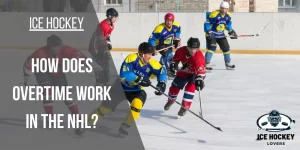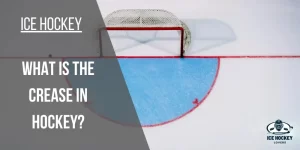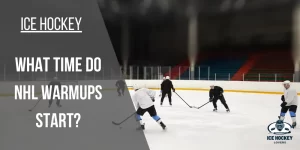Icing In Hockey: What is Icing Rule in Hockey?
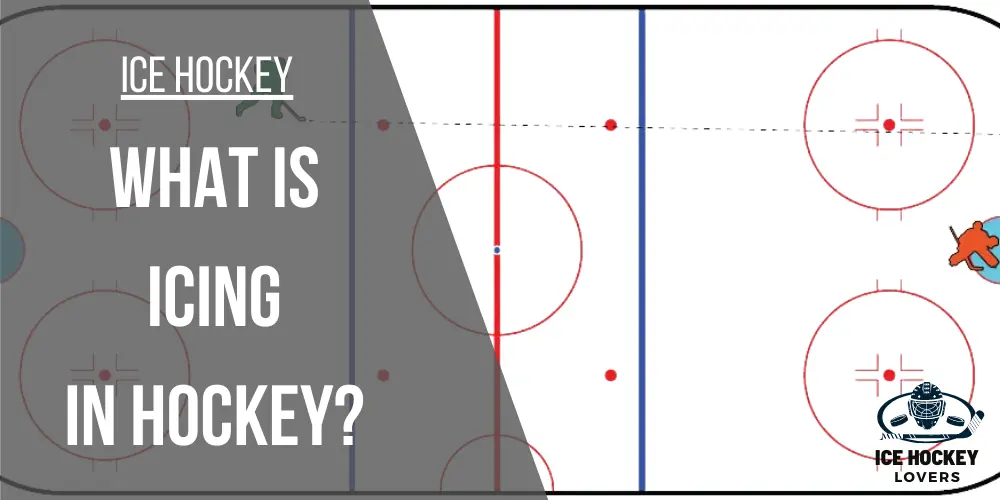
Icing is one of the most intricate rules in hockey. Using icing as a defensive strategy to combat an opponent’s attack is an indispensable part of ice hockey. Sometimes though, the team that did the icing touches the puck before its opponents, which makes the icing look offensive.
What is icing in hockey? – The red line in the middle divides the rink into two equal parts. If a player shoots the puck down the center line of ice, from his team’s side to the opposing team’s goal net, and bypasses the goal line, it will be considered icing. The consequence of icing is the play stoppage and will resume with a faceoff in the zone of the team responsible for icing.
Let’s dig into all the minor and significant details of icing in hockey.
Table of Contents
Why was the Icing rule introduced?
Icing became an official NHL rule in 1937. It happened when the players in the NHL teams started using delaying tactics in the game to prolong it by shooting the puck down the ice near the end of the game, especially when they were leading.
At that time, the clock would continue to go on with a team merely shooting the puck down the other side. This became annoying for the audience who would come to watch the game since it was a time waste.
Therefore USA hockey, to cope with this issue, the icing rule was introduced in which if you puck the faceoff the ice down this way, it will result in a faceoff in your own team’s zone, which may pave the way for the other team to score. Hence, this rule was an effective way to stop icing and ultimately fulfill the goal of keeping hockey a thrilling and attention-grabbing game.
Let’s understand the basics of the rule more clearly with a diagram’s help.
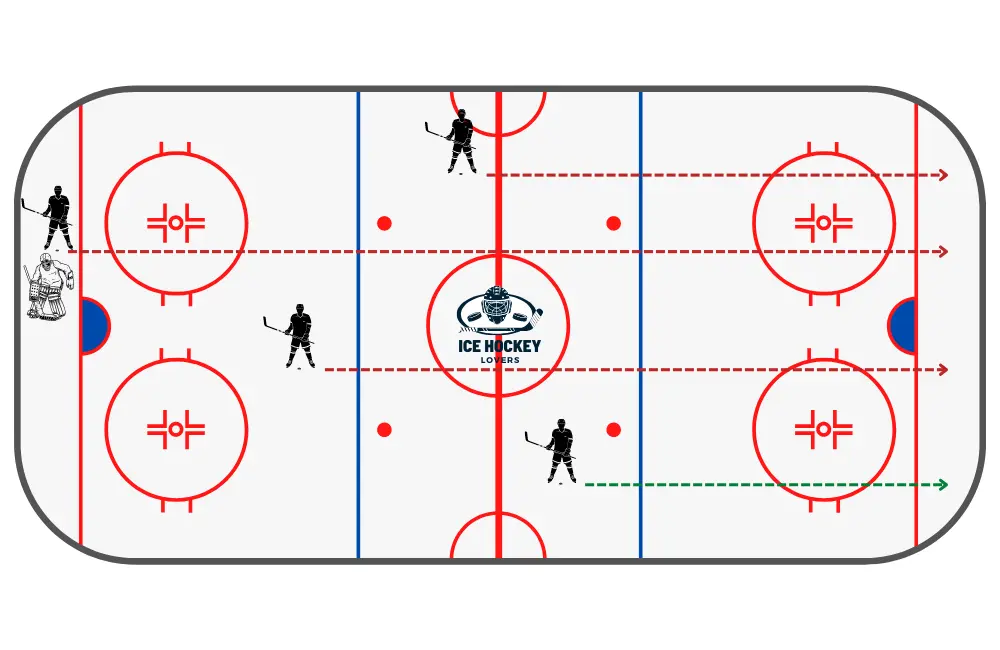
- The first three lines are examples of icing regardless of where the puck is shoot from. If the puck is shot before getting to the center red line, it will be taken as icing.
- The last line does not show icing because the puck was shot after the red line before it crossed the goal line.
For a better understanding, two more points are here:
- If the puck is shot before the center red line but does not cross the goal line, it will not be considered icing.
- Suppose the puck is shot before the center red line and crosses the goal line. But the lineman has wariness not to consider it icing if he has the surety that the team shooting puck team can already handle the puck before it get into the goal line.
No line changes after Icing in hockey
NHL amended the icing rule after the 2004-05 lockout to draw more consequences on the offending team for doing the icing in hockey itself. It was fixed that the team in trouble could do a no-touch icing rule in the middle or at the game’s end time in their defensive zone. To cut off the number of icing, NHL tightens the grip of rules on the icing.

According to the new revision of the rule, it was decided that any team which would be involved in icing the puck would not be allowed to make any change in the line on the whistling down of the play.
Now, this was a severe consequence because the other side would be able to change with fresh players while the defending team who iced the puck would have to stay on the field with tired players. More on them is that the faceoff will also take place in the icing team zone, only a few feet away from their net. This makes it hard for the icing team to defend against a faceoff that dots the other team with fresh legs away from their net.
Hence, the power plays and advantage of penalty kill goes to the other side. Therefore, players became more conscious of icing the two faceoff dots and off the puck to avoid the consequences.
What is hybrid or no-touch Icing?
No-touch icing occurs when icing occurs automatically when the puck has crossed the line. This results in stopping the play. While in the case of the hybrid touch icing rule, a player races toward the defensive faceoff circle to trigger the hybrid icing call. These means are adopted to make hockey a safer game and prevent injuries.
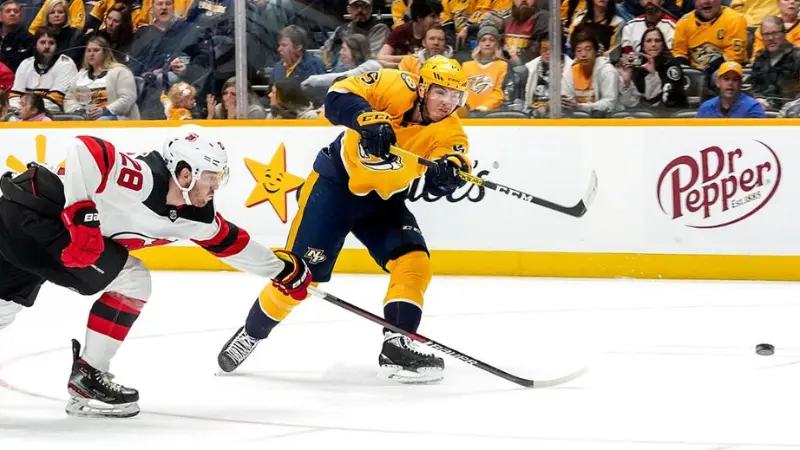
Touch icing is when a player from the opposing team touches the puck before the icing of one team, signaling the referee to stop the play and do a faceoff.
Although the catch is here, the team who did the first icing call can wave it off. If a team touches the puck first when it passes the goal line before the other team, then this is how they can wave off the first icing call.
In the past, when the opposing team shot the puck straight on the ice, in most leagues the defensive players would run to touch the puck first before the opposing team player did it. So, a number of defensive players went into the race to touch the puck behind the others, and in this race, many became injured over many years.
To deter teams to avoid such injuries while keeping this race alive in the game, the NHL brought the rules of hybrid and no-touch icing.
The new rule is that the race for players will be only to the faceoff dots in the team’s defensive zone, not to the boards’ ends to touch the puck. If the defensive players outrace the icing players in handling the puck, a whistle will be blown to stop the play for icing. In case the icing players touch the puck before the defensive players, then the official will let the game go on.
Icing while killing the penalty
Another instance when the players can ice the puck without any penalty box resulting in infractions is during a penalty. Icing is not called when the other team has lesser players than the one opposing player on either side at the time while the offending team is shooting the puck during a penalty. This is done to stop the other team’s power play.

Because a power play can become of too much advantage for the team on the power play and can give a tough time for the penalty team if they do not do the icing, if the scales do not have too much up and down, then rules allow the penalty team to do the icing.
So icing is a good help for the penalty killers to stop the power play and allow them to change more often and have fresh players.
However, icing a shorthanded team will keep the game flow, but it is noticed that players continue icing even they are shorthanded because they may not have a chance to change, but they can get time to have small rest. Nonetheless, it would cause more game stoppages, and NHL doesn’t like game stoppages and is concerned about keeping the game flow.
Is there a way to ice the puck without icing?
Yes, there is a way to do hockey icing, without actual icing. Hockey players are quick and smart in learning new ways to save themselves from the consequences. So they learned new tactics on how not to do hockey icing; instead, they do some little tricks that have the benefits of icing.
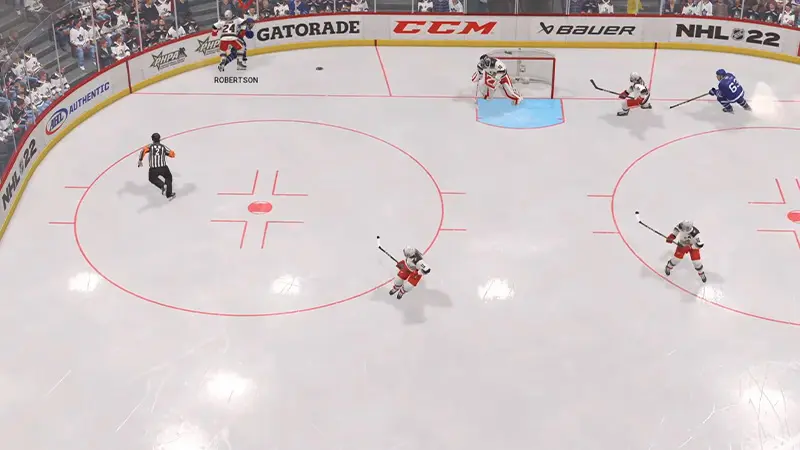
Many of you have noticed players flip the puck up in the air and down to the ice. The puck that goes into the air does not have enough power to cross the goal line when it comes down to the ice. However, this move allows the goaltender leaves the team to make a way into the defensive zone and do the line change.
How is Icing different from Offsides?

Icing is explained in detail above. Icing occurs when a player shoots the puck from one red line to the other one without touching it, due to which the other opponent’s side cannot stop playing with the puck out of their side without any direction.
Icing Vs Offside
Many ways have been discussed above to stop icing.
- If the icing team touches the puck before the other team, then icing will be null.
- Icing during penalty would have many effects on the team doing it.
Hence, this results in a minor penalty due to the team that iced the puck, and the NHL has serious regulations for this.
On the other hand, offside is called when the player crosses the blue line when he is attacking before the defensive player with the puck does. It usually happens when the defending player has passed the puck from behind the blue and crosses the goal line to a player from his team behind the red line.
This gives the attacking side an unfair advantage and stops the opposing side of players from picking their face off the ice.
To avoid offside calls, here are some options that prevent the players from offside calls.
- To avoid the call, the players skate on their blue line on the defensive side before their teammates bring the puck on the ice or pass to them.
- The offside will be waived off if the defender passes the puck over the blue line.
- It will also not be called when a player moves backward (both skates move past the blue line before the puck), as it does not allow the players to wait in the offensive zone.
When can a team ice the puck?
We learned that icing the puck is a severe offense and has dire consequences for the team that iced the puck. But there are some exceptions too. In some situations, a team is allowed to ice the puck. If the puck enters the goal, then a potential icing call is not considered, and the goal is allowed.
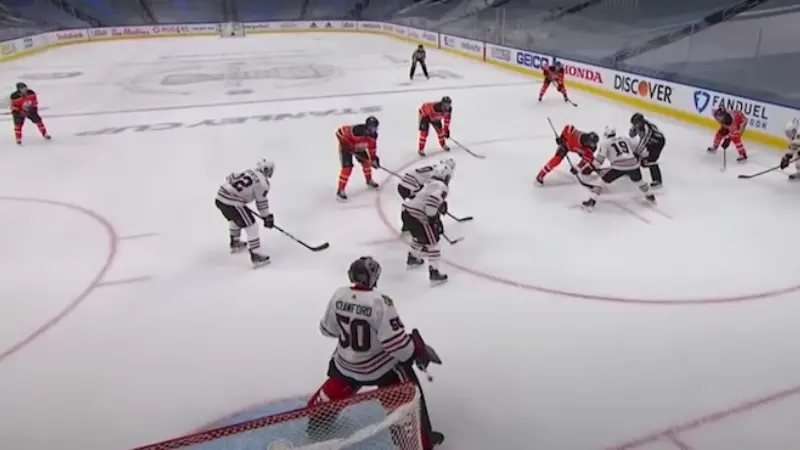
Mentioned below are the reasons.
- If the referee feels that any player from the other team except the goalie was able to play the shot but has not, then icing is not called, and the game is continued as before.
- Also, when the faceoff is being called, if the puck is iced, it will not be considered icing.
- Moreover, this is not icing when shooting the puck results in rebounding from an opponent in their zone and crossing the goal line. Faceoff also does not result in icing being called.
- A crucial instant when icing is not called is when the puck touches either an opposing player or the goalie before crossing the goal line.
Gaining the red line
On the ice hockey rink, there is a centerline marked in red. It divides the rink into two halves for the two teams playing the game. If a player from any team goes to shoot the puck from his own team’s side of the central red line where the opposing team’s goal line and goalie are, down past the other end boards and opposite team’s goal line, this will result in icing being called. The puck needs to gain the red line.
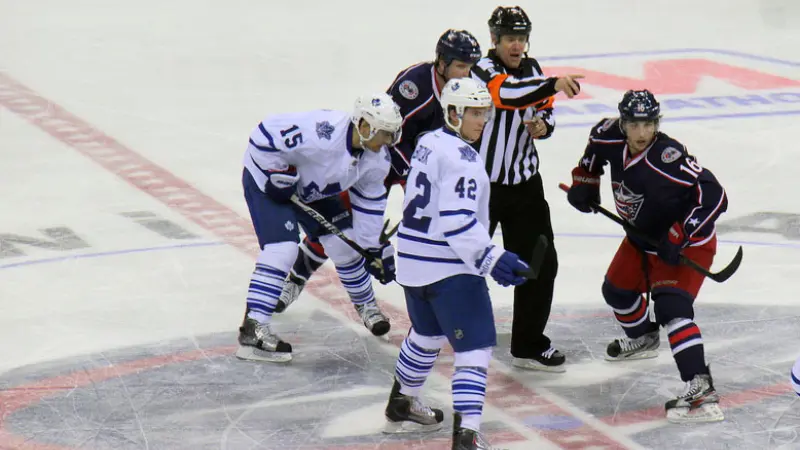
One of the exciting things to watch is when a player tries to skate the puck up over the center red line, known as gaining the red line. Once a player the puck crosses over the red line, he can shoot the puck down into the opponent’s defensive side.
Gaining the red line has two strategies involves:
- When a player shoots the puck into the zone, his team can quickly change lines without providing many scoring chances.
- Further, a team shot the puck into the zone for an offensive Forecheck to slash a goal chance.
Frequently Asked Questions
Are the rules of NHL icing different from other hockey leagues worldwide?
Almost all major hockey professional leagues now, including NHL, usually prefer hybrid icing. And amateur hockey leagues like the USA and national hockey league prefer no-touch hybrid icing.
Can goalies ice the puck?
Yes, goalies do the icing in hockey. If he fires the puck to the other end of the rink down the other faceoff dot ice as other players do, it will be counted as icing.
Can goalies dismiss icing?
No, a goalie cannot wave off the icing, although they can stop it by coming forward and playing the puck down the ice first. This act of the goalie moving forward to stop potential icing and playing the puck before it passes the goal line will cancel out the potential icing call.
What would happen if another team player played the puck?
It is the same as icing illegal for the goalie to touch the puck. If the opposing team player plays the puck down the ice before it gets into the goal line, it will dismiss the icing. This can be seen often when the puck is fired out of the defensive zone, avert the other team player, and further go down the ice. Then the icing will nullify, and if the play continues the game will ice the puck will continue.
What about icing in the recreational league?
Not any hard rule. Icing will be called out when the puck goes through the goal line.
Conclusion
This game may appear to the non-ice hockey gaze, where players skate rapidly and hit the puck. But in this fast-moving game, players do icing as they find a chance per the need. NHL would never escalate this rule because of the extra stoppages and wasted time because icing in hockey always brings thrilling moments and attention-grabbing races to the audience that they like to see. This is why NHL allows icing in hockey on some points but on the other hand, officials also tighten the grip and put extra teeth on this rule to stop unnecessary play stoppages.
So, what do you say? What’s your opinion about icing in hockey? Comment your thoughts in the comments section below.

Who is Austin Taylor?
Meet Austin Taylor, your go-to source for everything ice hockey! With a passion for the sport that’s as deep as the ice itself, Austin Taylor brings you concise, expert insights and nitty-gritty details on all things hockey. From gear reviews to strategy breakdowns, Austin Taylor is your trusted guide to navigating the exhilarating world of ice hockey. Get ready to lace up your skates and dive into the game with Austin Taylor as your ultimate companion.

